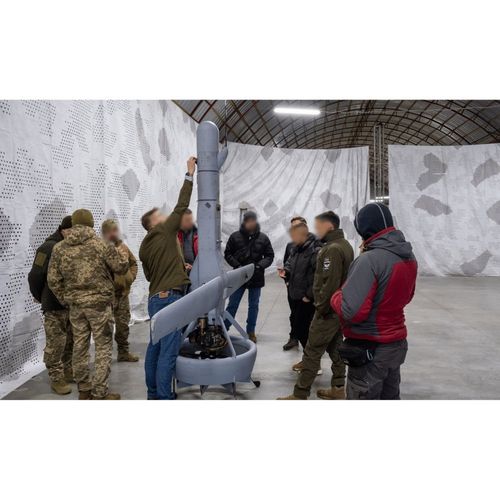Shield AI Starts Training with Ukraine’s Unmanned Systems Forces

PHOTO: Shield AI
January 21, 2025
BY Shield AI
Advertisement
Advertisement
Related Stories
Metron Inc., a leader in autonomous software innovations for defense and commercial applications, and Cellula Robotics Ltd., a leading provider of robotic undersea platforms, announced the successful completion of a multi-mission open-water demonstration off the coast of Vancouver, Canada.
Senator John Hoeven outlined two major milestones for Project ULTRA. Project ULTRA has started conducting unmanned cargo flights between Grand Forks Air Force Base and Cavalier Space Force Station. Hoeven has also secured an agreement in principle with the Department of Defense to increase the contract ceiling for Project ULTRA to $100 million, up from $18 million.
Governor Gretchen Whitmer announced a new executive directive to establish the Michigan Advanced Air Mobility (AAM) Initiative, designed to scale Michigan’s AAM capabilities, ensure safe and efficient integration of these technologies across public and private sectors, and position our workforce, manufacturers and infrastructure as national assets in the deployment of these technologies.
CAE Awarded Contract by the Italian Air Force to Deliver Block 5 Predator Mission Trainer Plus for MQ-9A Reaper Drone
CAE announced that it has been awarded a contract by the Italian Air Force to deliver the MQ-9A Block 5 Predator Mission Trainer Plus (PMT Plus). This contract, which also includes initial in-service support for the PMT Plus, underscores CAE’s commitment to providing cutting-edge training solutions that enhance the mission readiness of Italy’s defense forces.
UAS Magazine announced the preliminary agenda for the UAS Summit & Expo, scheduled for Oct. 14-15 at the Alerus Center in Grand Forks, North Dakota. The UAS Summit & Expo brings together industry leaders, innovators and stakeholders driving the future of unmanned aircraft systems across commercial, defense and public sectors.





